Celestron UpClose G2 16x32 binoculars review
The Celestron UpClose G2 16x32 binoculars are small enough to carry everywhere and give great close-ups, though they're not for your back garden or for stargazing
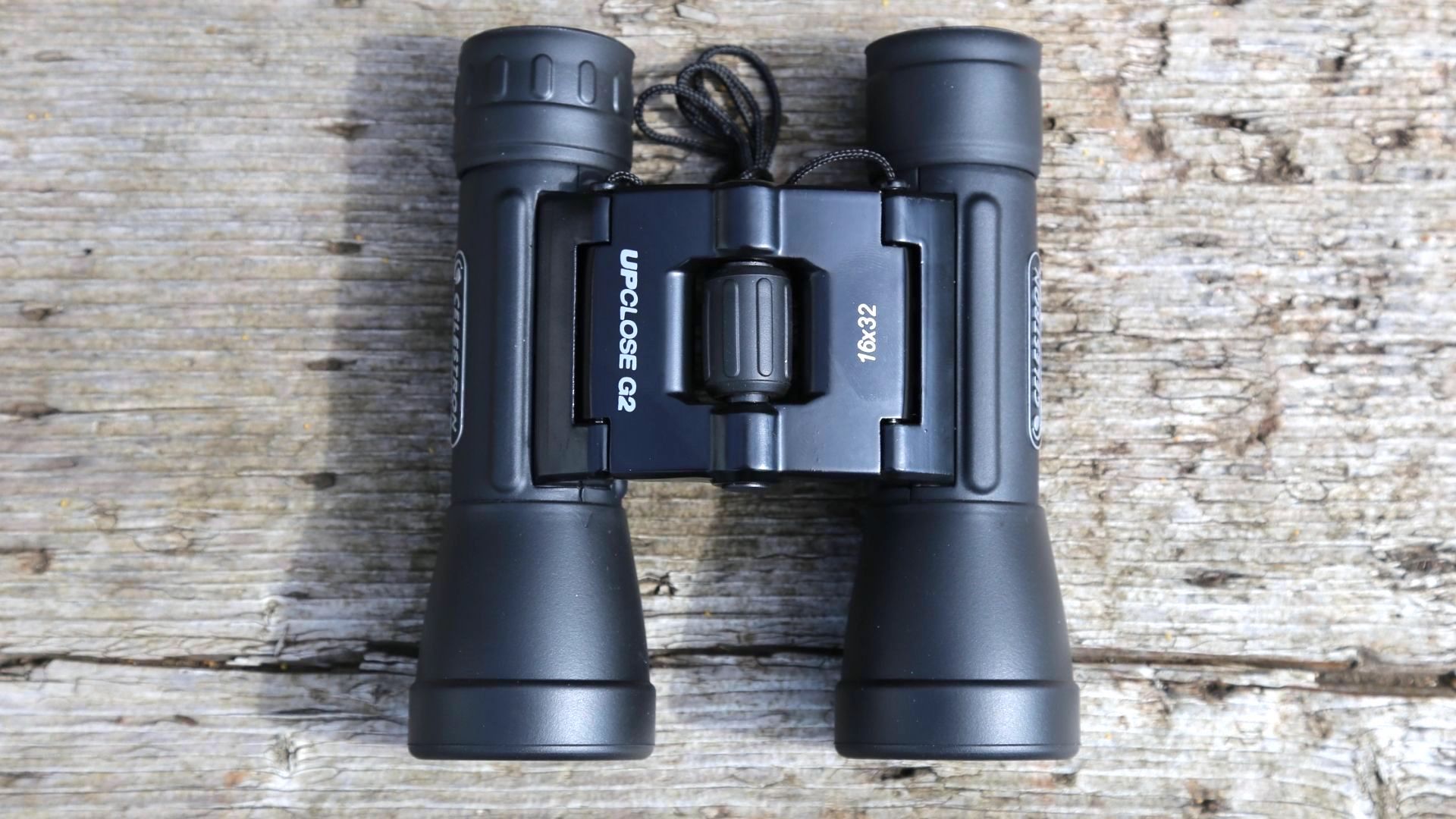
The Celestron UpClose G2 16x32 binoculars will suit anyone after a simple and compact pair of binoculars for high magnification while hiking, bird-watching or at sports events. However, they lack close focus and aren't good in the dark.
-
+
Easily portable
-
+
Compact space-saving design
-
+
Excellent build quality
-
-
Closest focus is 8m/26 ft
-
-
Uses BK-7 optical glass
-
-
Images lack contrast
Why you can trust T3

The Celestron UpClose G2 16x32 binoculars are not going to trouble our list of the best binoculars, but could these compact and uncomplicated binoculars give you the close-ups you're after? Weighing just 369g/13 oz and easily able to slip into a small bag or hang around the neck for long periods, the Celestron UpClose G2 16x32 are just the kind of binoculars that could give years of use in all kinds of scenarios. Hikers, in particular, will love their simple design, which comes without lens caps or eyecup covers. They're small enough to go into the glove box of a car for occasional use, or into a jacket pocket for taking to a sports event.
If you want an occasional close-up, but not a ridiculously large pair of binoculars – and you don't want to break the bank – these could be useful. Read on for my full Celestron UpClose G2 16x32 binoculars review.
Celestron UpClose G2 16x32 binoculars review: price and release date
The Celestron UpClose G2 16x32 are part of the manufacturer's 11-strong lineup of UpClose G2 products that are sold as 'everyday' binoculars (we've also reviewed the Celestron UpClose G2 10x50 binoculars). They've been on sale unchanged for over a decade and cost around UK £42.99 / US$36.95 / AU$60.42. In the UK the Celestron UpClose G2 16x32 is sold exclusively by Argos.
Celestron UpClose G2 16x32 binoculars review: design and features
The Celestron UpClose G2 16x32 uses the space-saving roof prism design. This means that its two prisms are in a straight line along the barrels, with the two joined by a hinge.
Celestron UpClose G2 16x32 binoculars specs
Magnification: 16x
Objective diameter: 32mm
Field of view at 1000m: 62m
Closest focusing distance: 8m/26 ft
Eye relief: 10mm/0.4"
Weight: 369g/13 oz
Dimensions: 91 x 56 x 142mm / 3.6 x 2.2 x 5.6"
The design uses the hinges actually about the same size as in a much larger pair of binoculars, primarily to make sure the inter-pupillary distance on the Celestron UpClose G2 16x32 is usable.
They're essentially a pair of high magnification binoculars with small objective lenses. That has a few advantages and limitations. Its 16x magnification is impressive for the money, but their major limitation is light. At just 32mm its objective lenses won't let him nearly as much light, say, a pair boasting 50mm objective lenses. With such limited light-gathering abilities the Celestron UpClose G2 16x32 are not designed to be used in low light, and definitely not at night.
They also use BK-7 optical glass, which you'll struggle to find used on mid-range binoculars, though the Celestron UpClose G2 16x32 do feature multi-coated lenses (mind you, you'll be hard pressed to find any pair of binoculars that doesn't claim to have that).
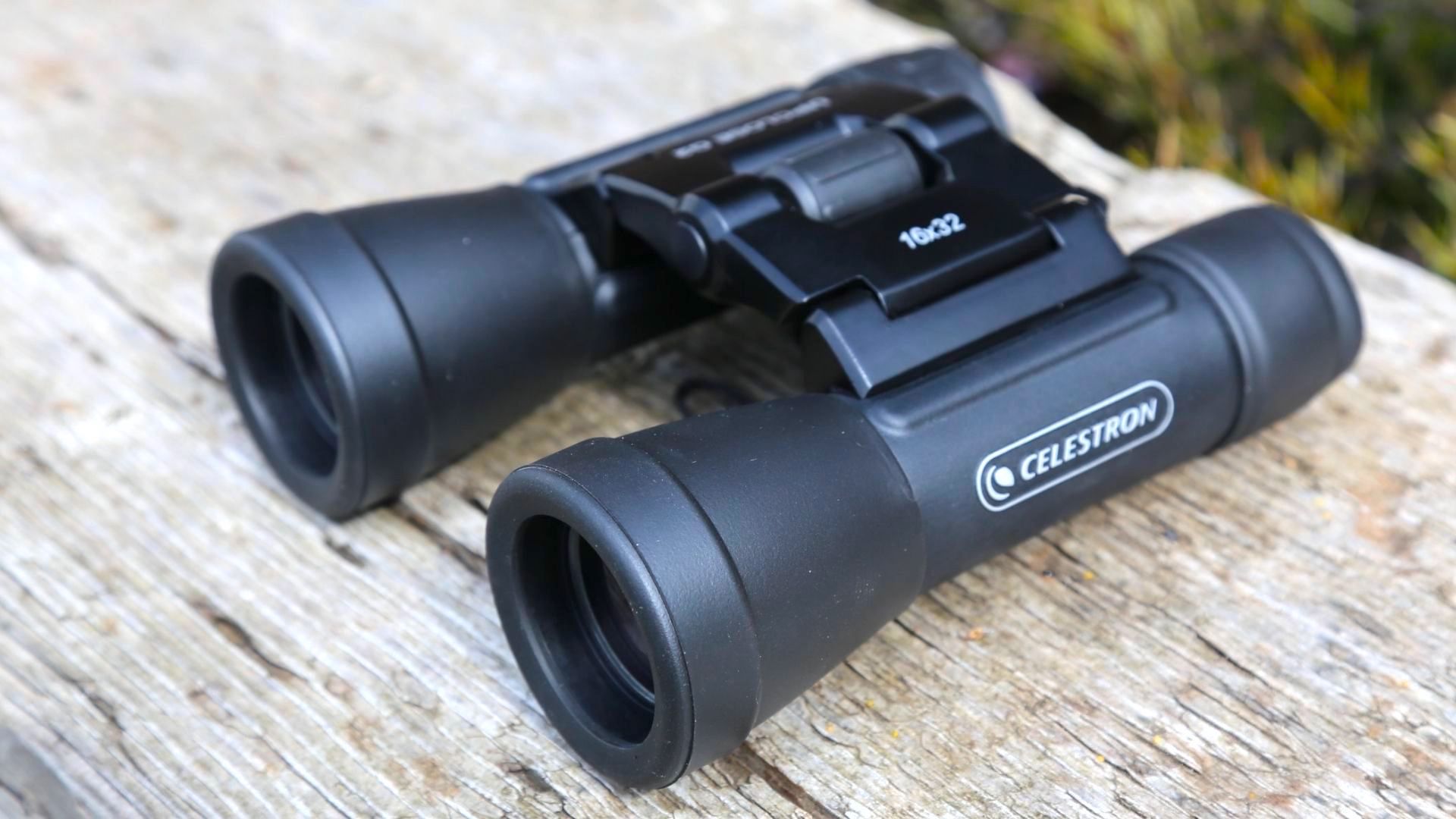
Celestron UpClose G2 16x32 binoculars review: build and handling
The Celestron UpClose G2 16x32 are a reasonably tough and well-made pair of binoculars for the money, but their main emphasis is on magnification and saving money. There's not much to get excited about in the design, but I do like the water-resistant rubber exterior that's easy to hold in all kinds of weather conditions, including drizzle and rain. Although they're not actually rated as waterproof, I would have no issues in taking these out in all kinds of weather. Nor are they rated as drop-proof, but I think they could withstand some pretty rough treatment.
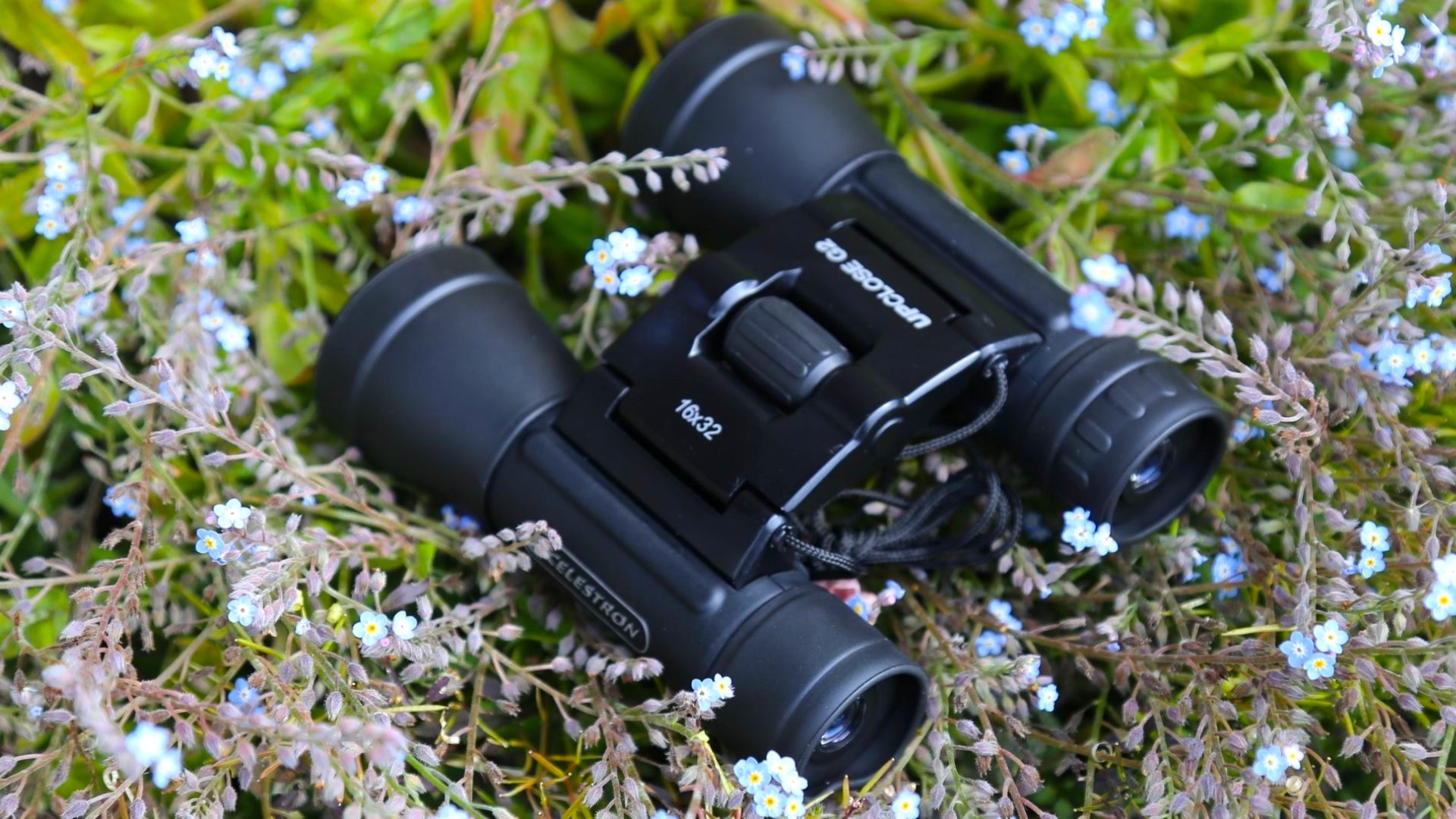
The hinge connecting the barrels works well, with the correct balance of flexibility and resistance. The same goes for the focus rocker, which is soft to the touch and is ridged to make it easy to operate while wearing gloves. The rubber covering also has ergonomic finger ridges underneath.
Something it's rare to see on a pair of binoculars is a simple cord replacing a proper neck strap. On most pairs of binoculars you tend to get an optional next strap that offers some padding. Not so on the Celestron UpClose G2 16x32, which has a one metre loop of black cord in lieu of an extract. Given that these binoculars are so light, in practice it works fine.
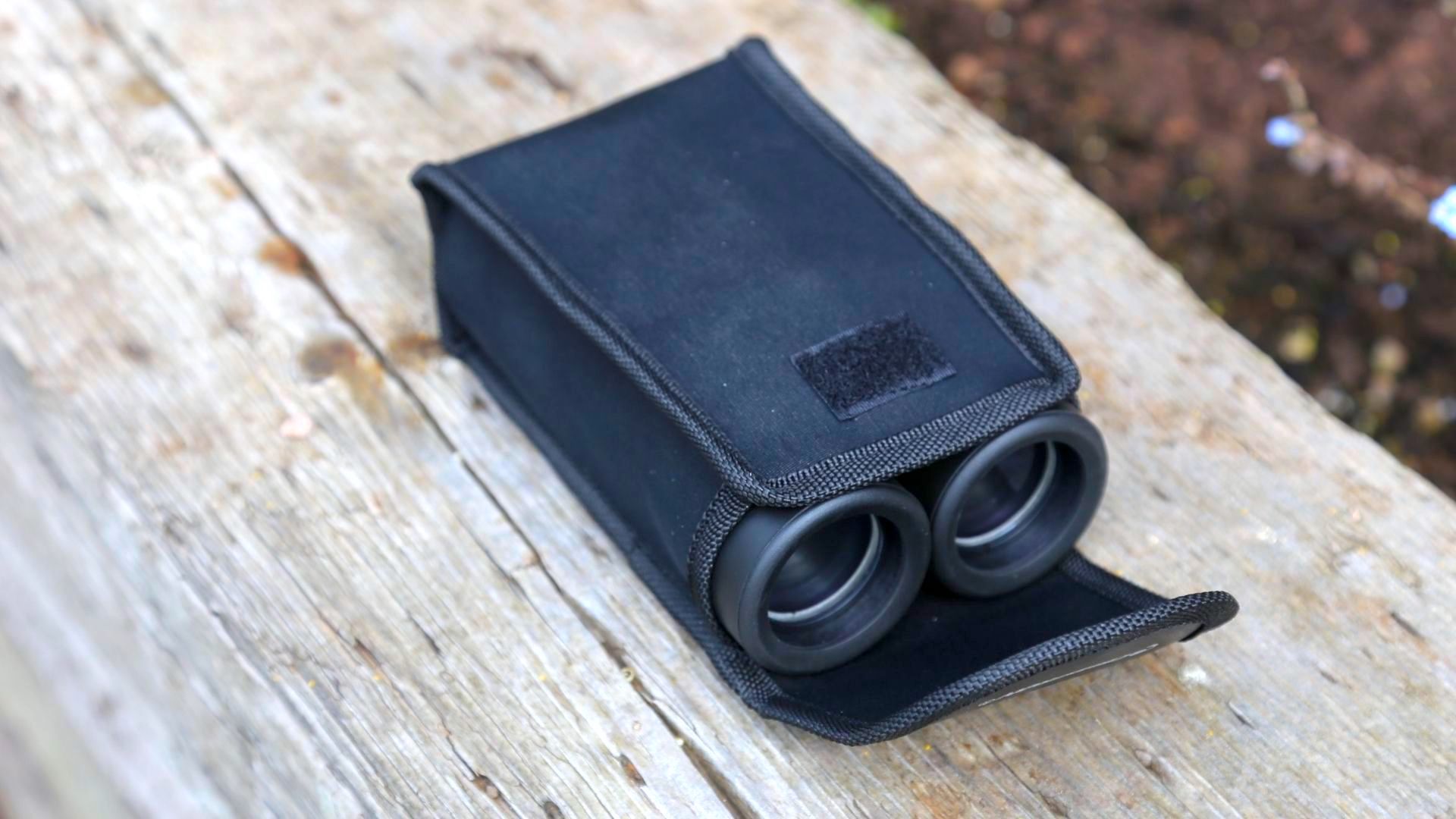
Something the Celestron UpClose G2 16x32 doesn't have that almost all other binoculars possess are lens caps. It makes for a much simpler design because it's impossible to lose things that don't exist, but I would like to see some kind of built-in protection. For example, some binoculars have drop-down rubber lens caps that stay permanently attached to the ends of the barrels.
I'm not too worried about damaging the objective lenses, because they're slightly recessed into the barrels. However, this pair of binoculars could definitely do with some protection for the eyecups, which seem a little exposed and prone to being scratched. They ship with a lens cloth and a small neoprene case that fastens using Velcro. It has a built-in belt loop.
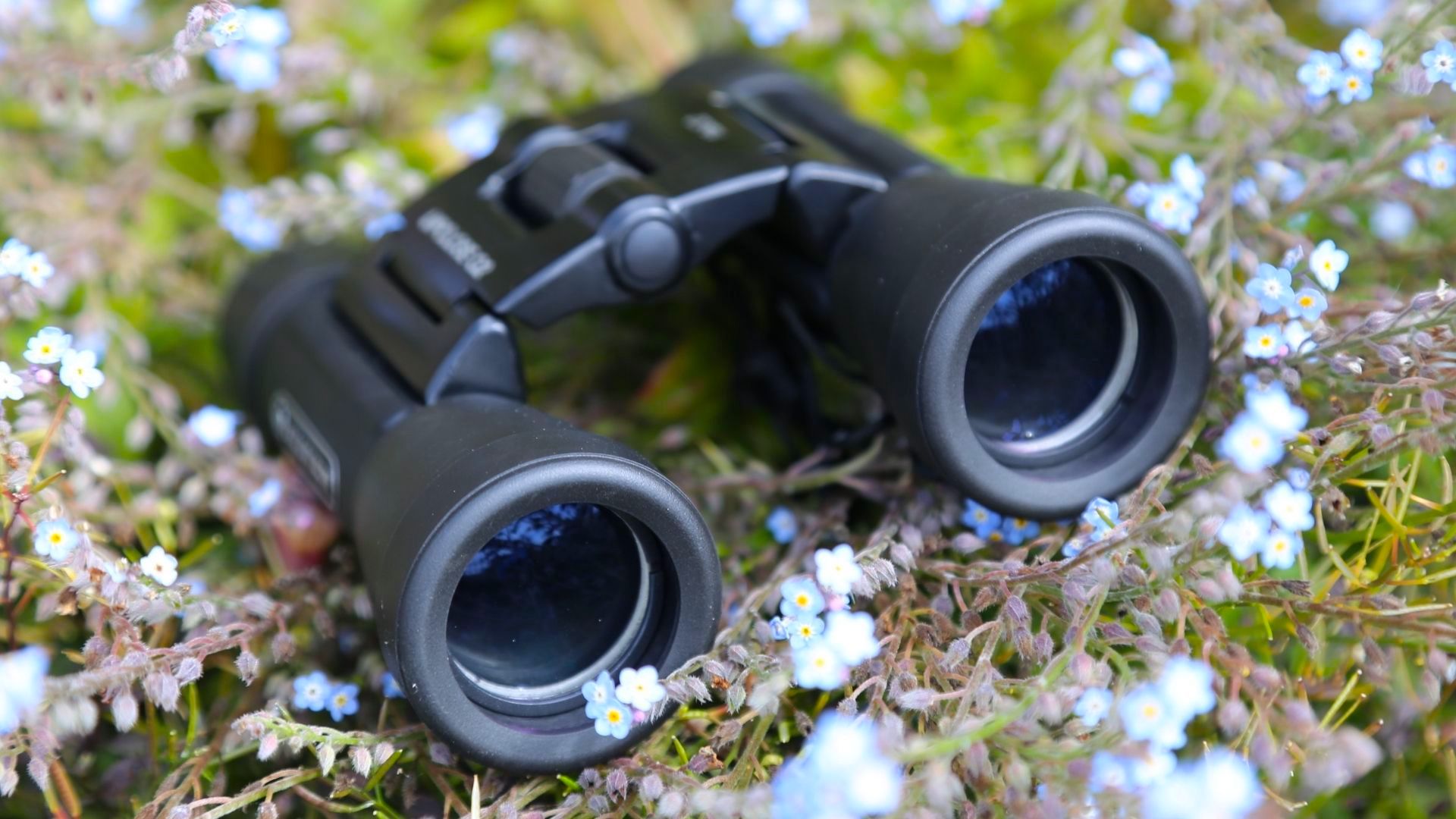
Celestron UpClose G2 16x32 binoculars review: performance
The Celestron UpClose G2 16x32 works well out in the field, but optically they're limited and aren't much use in a back garden, or at night. On a bright sunny day in the mountains I was able to point them at distant buildings and trees and get good results. However, the image they create isn't all that bright or contrasty. Their relatively narrow objective lens – the same feature that makes them easily portable – has the effect of making the images noticeably duller as the light levels lower.
Tested at night the Celestron UpClose G2 16x32 didn't impress for stargazing, with star clusters lacking any kind of pop. Even bright stars like Arcturus and Vega appeared dim. The exception was a crescent Moon, which looked bright and sharp, with a hint of 'Earth-shine' on our satellite's dark limb.
The Celestron UpClose G2 16x32 are all and only about high magnification in daylight. The best and most detailed views are between about 10m and 20m, making them useful for focusing on birds perhaps at the end of a typical garden. These binoculars can't focus on anything closer. Anything further and the image drops off in terms of brightness and contrast.
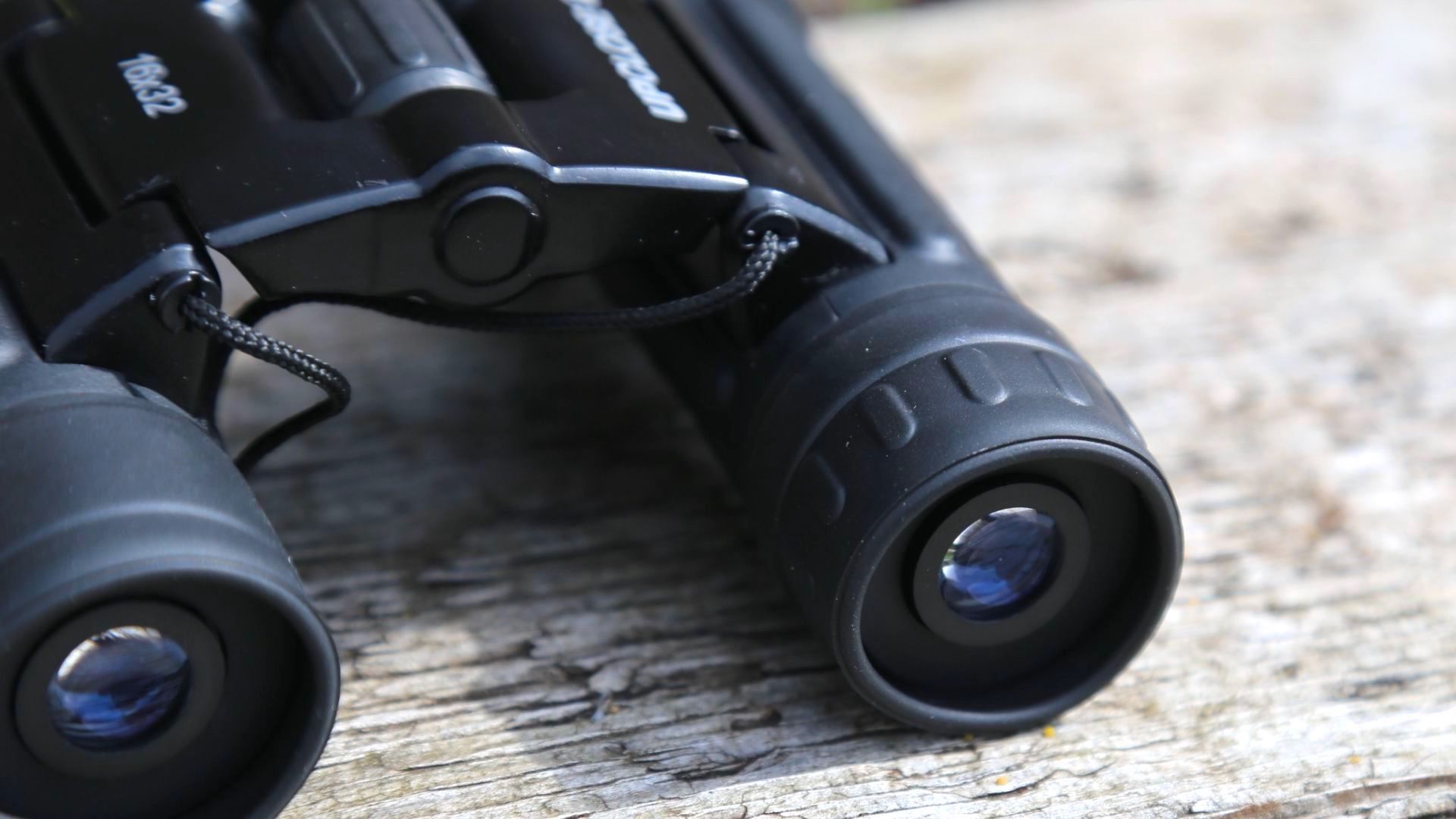
Throughout my test I didn't find the Celestron UpClose G2 16x32's images to be immersive. That's partly down to their novel approach to eye relief; while most pairs of binoculars have twist-up eyecups, these don't. Instead, you get a flimsy rubber rim around the eyepiece that extends to about 10mm. That's not much, and if you wear spectacles I would advise getting binoculars with a lot more than 10mm eye relief. However, I can make an exception on the Celestron UpClose G2 16x32 because their eyecups are soft and can be rolled down to disappear completely. Fine, but the result is that you just don't get immersed in the views they offer.
Celestron UpClose G2 16x32 binoculars review: alternatives to consider
If you're after a foldable and compact pair of binoculars for all-round use and you're less fussed about high magnification then the Olympus 10x25 WP II could appeal. If you want a pair of binoculars primarily for bird-watching at home then go for the Celestron Trailseeker ED 8x42, which will give you a brighter image with more contrast (there are more options, too, in our ranking of the best binoculars for birdwatching). For something as compact as possible for all-round use and excellent for stargazing, the Celestron UpClose G2 10x50 in the same line-up will suit.
Celestron UpClose G2 16x32 binoculars review: verdict
Budget high magnification binoculars destined for backpacks, gloves boxes and sports events, the Celestron UpClose G2 16x32 impress mainly on their magnification and compact size. At their best in bright conditions, they are easy to use and have a rugged build, though they lack versatility. As well as not being much use in a small back garden because they can only focus on objects 8m/26 ft. away (though anything between about 10m and 20m looks excellent), they don't let enough light in for any kind of astronomical use save for casual moon-gazing.
Sign up to the T3 newsletter for smarter living straight to your inbox
Get all the latest news, reviews, deals and buying guides on gorgeous tech, home and active products from the T3 experts
Jamie is a freelance journalist, copywriter and author with 20 years' experience. He's written journalism for over 50 publications and websites and, when he's not writing, spending most of his time travelling – putting the latest travel tech through its paces.
-
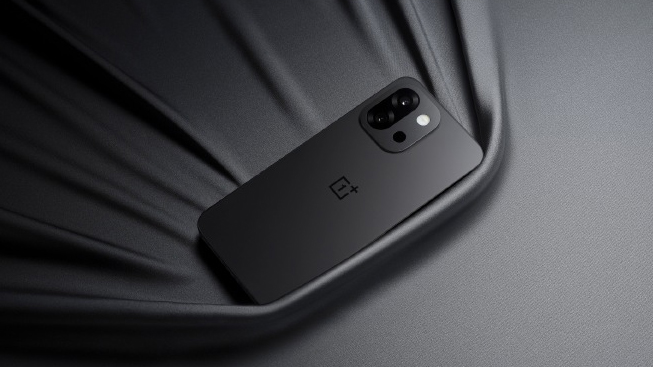 OnePlus 13T design leaked with iPhone-like design
OnePlus 13T design leaked with iPhone-like designA flurry of leaks have revealed the OnePlus 13T in the flesh
By Chris Hall Published
-
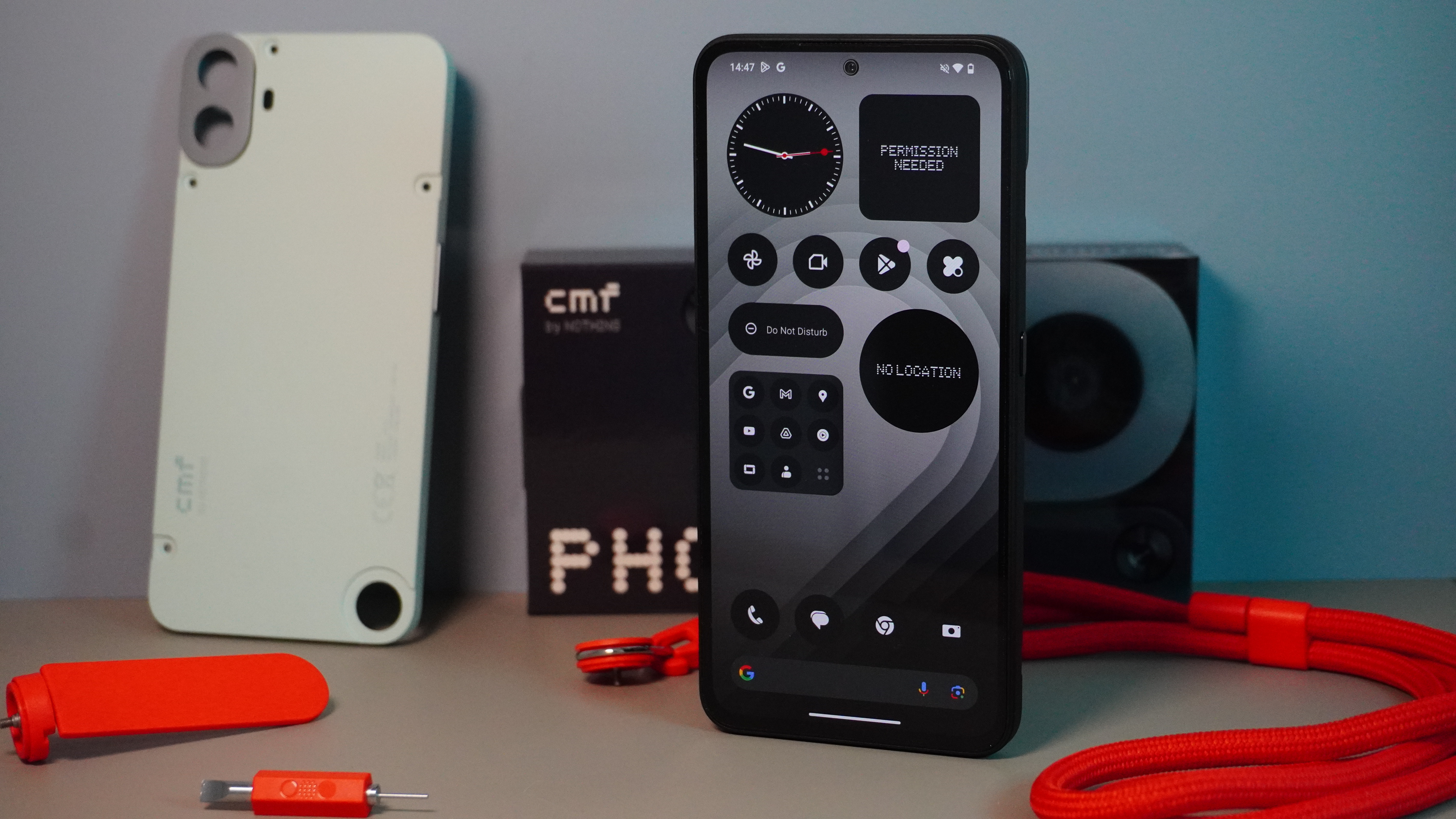 New Nothing phone does something iPhone and Samsung don't – but there's a catch
New Nothing phone does something iPhone and Samsung don't – but there's a catchYou have to live in a certain country to benefit
By Britta O'Boyle Published
-
 The Last of Us season 2 isn't the best, according to viewers
The Last of Us season 2 isn't the best, according to viewersCritics and viewers are at odds with The Last of Us season 2's premiere
By Mike Lowe Published